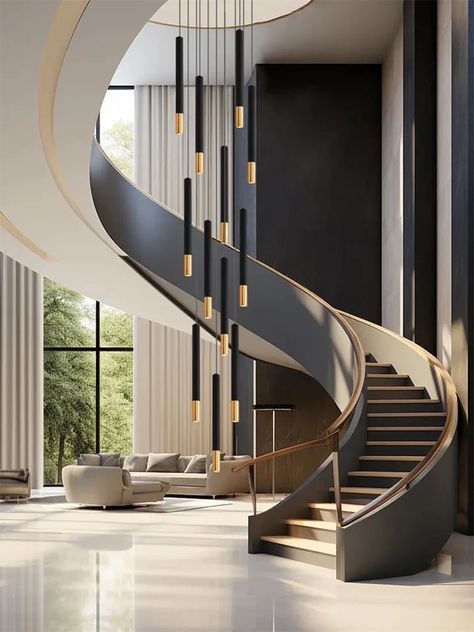
When it comes to staircase design, balusters often get overlooked — but they’re essential in shaping both the safety and aesthetics of your stairs. Whether you’re planning a full renovation or just looking to refresh your home’s look, selecting the right balusters for stairs can have a major impact on your interior or exterior design. Here we will walk you through all about balusters – types, material, styles, and how they contribute towards the overall structure of a staircase.
What Are Stair Balusters
Balusters are sometimes called spindles or pickets and are vertical posts which occupy the space between the handrail and the stair treads. The primary function is safety reasons because they prevent falls from occurring, but they also play a highly important role in visual appeal for your stairs.
Balusters are offered in all sorts of different materials and designs, so finding one to match your home’s style and decor is never hard. With wooden balusters to metal, and everything in between, finding one that completes the look in your home will not be a difficult task.
Types of Stair Balusters
Picking balusters will start by realizing the varieties present. Following are the most popular types:
1. Wood Balusters
Wood balusters are timeless and adaptive. They range from simple square spindles to more ornamented, turned styles. Wood materials of choice are oak, maple, and pine. Wood balusters can be stained or painted to suit your interior theme.
2. Metal Balusters
Metal balusters, specifically wrought iron or steel, convey a more contemporary look. Metal balusters are solid, rigid, and can be styled in numerous ways — from twisted themes to sleek, geometric shapes.
3. Glass Balusters
Glass balusters are ideal for homes that desire an open, contemporary appearance. They maximize light transmittance and offer an uninterrupted visual line, creating an area appear larger and more refined.
4. Cable Balusters
One of the most sought-after options for interior and exterior stairs, cable balusters offer a streamlined appearance. Composed of horizontal steel cables, they’re perfect for homeowners who wish for a streamlined, industrial appearance.
Styles to Match Any Interior
Balusters come in different styles to suit different tastes. Below are some design ideas based on interior styles:
Traditional Houses: Employ turned wood balusters with intricate details.
Farmhouse or Rustic Styles: Square wood balusters or matte black wrought iron give a cozy, earthy ambiance.
Modern Interiors: Choose slim metal balusters or a modern stair railing with a combination of materials like glass and steel for an architectural, clean look.
Not only does a modern stair railing look good, but it also complies with today’s building codes and supports safety and accessibility. The combination of new materials and low-profile designs can transform your staircase into a showpiece in your home.
Installing and Replacing Balusters
The task of installing or replacing stair balusters may look scary, but it can be accomplished as a DIY task, as long as you are familiar with tools and work. Just follow these steps:
Measure and Plan: Determine how many balusters you will have. As a rule of thumb, have a baluster for every 4 inches to meet building codes.
Remove Old Balusters: Carefully unscrew or cut the old balusters.
Install New Ones: Secure the new balusters in place using epoxy, nails, or baluster shoes, depending on the design.
Finish: Paint, stain, or seal your new balusters to protect them and enhance their appearance.
If you’re not confident with tools or your staircase has complex angles, consider hiring a professional installer.
Maintenance Tips
Baluster maintenance varies based on the material:
Wood: Clean regularly and re-stain or repaint as needed to protect from wear.
Metal: Wipe clean with damp cloth and inspect for rust; apply rust-resistant coatings where necessary.
Glass: Clean with glass cleaner to maintain cleanliness and sparkle.
FAQs About Balusters for Stairs
What is typical spacing between stair balusters?
Building codes typically require no more than a 4-inch gap between balusters to prevent children from passing through.
Are balusters and spindles the same?
Yes, the terms are often used interchangeably. Both refer to the vertical members that support the handrail of a staircase.
Can I mix materials, like wood and metal, for a unique look?
Yes! Mixing materials is a great way to add visual interest. For instance, mixing wood handrails with metal balusters creates a balanced, contemporary farm look.
How much does it cost to replace stair balusters?
Prices vary with labor and material. DIY wood installations can be anywhere from $5–$10 per baluster, while iron or glass custom units can range from $50+ per unit, not including labor.
Do balusters come pre-assembled with stair railings?
Pre-assembled railing kits are available, mainly for modern systems. Most custom staircases, though, require baluster installation independently.
Final Thoughts
Stair balusters are not just functional — they’re a design element that can make a big difference in your home’s look. Whether you’re captivated by the coziness of classic wood or the minimalism of a modern stair railing, choosing the ideal balusters will make your staircase both safe and stylish.
If you’re planning a stair remodel or building from scratch, take the time to explore all the options. The right balusters can become a stunning architectural feature that adds value and beauty to your space for years to come.